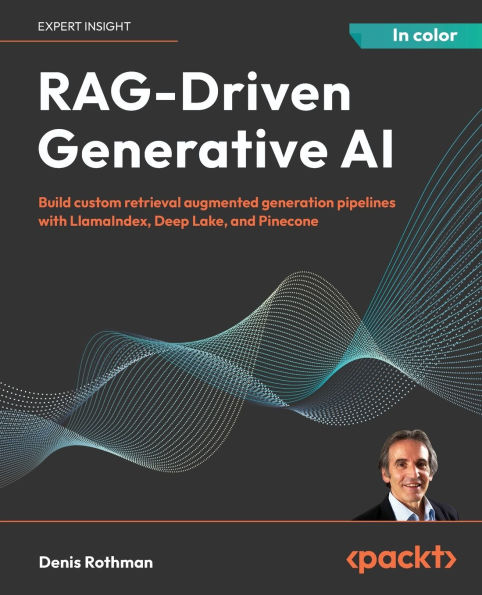A summary and White Paper on RAG-Driven Generative AI, including LlamaIndex, Deep Lake, and Pinecone. Add a reference list for RAG application development.
Summary:
RAG-Driven Generative AI is a powerful approach that leverages Retrieval Augmented Generation (RAG) to enhance the capabilities of generative AI models. By combining the strengths of information retrieval and natural language generation, RAG models can produce more relevant, informative, and accurate responses to user queries. This summary provides an overview of the key components, benefits, and potential applications of RAG-driven generative AI.
Key Components:
- Retrieval: This involves finding relevant information from a large corpus of text or data.
- Augmentation: The retrieved information is integrated into the input prompt for the generative AI model.
- Generation: The augmented prompt is processed by the generative AI model to produce a response.
Benefits:
- Improved Relevance: RAG models can provide more relevant and informative responses by accessing and incorporating relevant information from a knowledge base.
- Enhanced Accuracy: By grounding responses in factual information, RAG models can reduce the likelihood of generating incorrect or misleading information.
- Scalability: RAG models can handle large datasets and complex queries, making them suitable for a wide range of applications.
Applications:
- Customer Service: RAG-driven chatbots can provide personalized and informative responses to customer inquiries.
- Content Creation: RAG models can assist in generating high-quality content, such as articles, blog posts, and product descriptions.
- Research and Analysis: RAG models can be used to analyze large datasets and extract relevant insights.
- Education and Training: RAG-driven tutors can provide personalized explanations and guidance to learners.
Tools and Technologies:
- LlamaIndex: A flexible framework for building RAG applications.
- Deep Lake: A scalable and efficient data storage and management platform.
- Pinecone: A real-time vector database for efficient similarity search.
White Paper: RAG-Driven Generative AI: Building Custom Retrieval Augmented Generation Pipelines
Introduction This white paper explores the concept of RAG-driven generative AI and provides a comprehensive guide for building custom RAG pipelines using LlamaIndex, Deep Lake, and Pinecone. We will delve into the theoretical underpinnings of RAG, discuss the key components of a RAG pipeline, and present practical examples and best practices.
Theoretical Foundations of RAG
- Overview of Retrieval Augmented Generation
- Relationship between information retrieval and natural language generation
- Benefits of RAG over traditional generative AI approaches
Building a RAG Pipeline with LlamaIndex, Deep Lake, and Pinecone
- Data Preparation and Ingestion
- Creating a Document Index with LlamaIndex
- Vector Embedding and Storage with Deep Lake and Pinecone
- Retrieval and Augmentation
- Generation with a Generative AI Model
Best Practices for RAG Pipeline Development
- Data Quality and Relevance
- Vector Embedding Selection
- Retrieval Efficiency
- Evaluation and Refinement
Case Studies and Applications
- Customer Service Chatbots
- Content Generation
- Research and Analysis
- Education and Training
Conclusion RAG-driven generative AI offers a powerful approach to enhancing the capabilities of generative AI models. By leveraging the strengths of information retrieval and natural language generation, RAG models can produce more relevant, informative, and accurate responses to user queries. The tools and technologies discussed in this white paper provide a solid foundation for building custom RAG pipelines and exploring the vast potential of this exciting field.
Reference List:
- LlamaIndex: https://www.llamaindex.ai/
- Deep Lake: https://www.deeplake.ai/generative-ai
- Pinecone: https://www.pinecone.io/
- Retrieval Augmented Generation: https://en.wikipedia.org/wiki/Retrieval-augmented_generation
- Generative AI: https://en.wikipedia.org/wiki/Generative_artificial_intelligence
- Natural Language Processing (NLP): https://en.wikipedia.org/wiki/Natural_language_processing
- Information Retrieval: https://en.wikipedia.org/wiki/Information_retrieval
Note: This is a general outline for the white paper. You can expand on each section, provide more technical details, and include specific examples and code snippets to illustrate the concepts.



